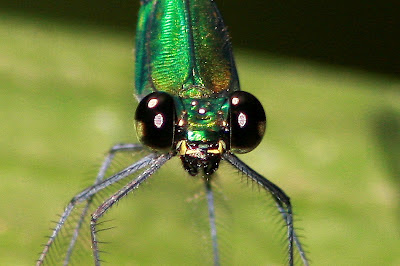Insect Mouthparts
Basically, insect mouthparts consist of four modified appendages: labrum (upper lip), mandibles (jaws), maxillae (second jaws) and labium (lower lip). Mouthparts are categorized into two main groups: biting mouthparts and sucking mouthparts.
 |
| A damselfly has biting mouthparts. |
Insects with biting mouthparts are usually those that eat vegetation or other insects. These insects use their muscle powered mandibles to chew and tear their food. Damselflies and grasshoppers are examples of this group of insects. The butterflies are insects with sucking mouthparts. What appear to be a tube are two elongated maxilla fused together. In butterflies, it is known as proboscis and it can curl inward.
 |
| Proboscis of a butterfly. |
The mouthparts are adaptation of insects for different diet. Therefore, you can guess what type of mouthpart an insect possesses by observing its feeding behavior. Even within the same species, the mouthparts may differ depending on life stage. Take the example of the Lepidopterans (butterflies and moths). In larval stage, caterpillars have biting mouthparts because they consumed leaves but adults have sucking mouthparts because they feed on nectar.
Related Post